#Steichen Richardson
Text
Smilin' Shane Steichen talks about beginning the process of building #Colts QB Anthony Richardson into a champion!
youtube
View On WordPress
0 notes
Text
Pierde quarterback Anthony Richardson temporada por cirugía en hombro en NFL
El mariscal de campo Anthony Richardson opta por una cirugía en el hombro por lo que pondrá fin a su temporada con los @Colts.
Agencias, Ciudad de México.- El quarterback novato de los Colts de Indianápolis Anthony Richardson será operado del hombro derecho, cirugía que le pondrá fin a su temporada, dijo el coach Shane Steichen.
Steichen dijo que el equipo buscó múltiples opiniones de doctores y ultimadamente se decidió que la cirugía era la mejor opción a largo plazo para la salud de quien fuera estrella de los Gators…

View On WordPress
0 notes
Link
[ad_1] Getty Images Colts rookie quarterback Anthony Richardson left Sunday's game against the Titans with a right shoulder injury, marking the third time in five weeks the first-round draft pick has been forced to the sidelines. Richardson suffered an AC joint injury, the Colts announced Monday. NFL Media reported more details, saying it's a Grade 3 sprain and that he could miss at least a month and possibly longer. Colts head coach Shane Steichen did not offer much on how long Richardson might be sidelined, only saying the signal-caller will miss "some time," via CBS Sports Lead NFL Insider Jonathan Jones.NFL Media reported the rookie was diagnosed with a Grade 3 AC joint sprain and could miss at least a month and possibly longer. While Steichen did not say how much time Richardson would miss, IR remains a possibility.Richardson received an MRI at an imaging center, according to CBS Sports HQ Senior NFL Insider Josina Anderson. Richardson, who wasn't hospitalized, will seek a second opinion regardless of the results of his initial scan, per Anderson. Richardson stayed on the ground after falling on his right shoulder while being tackled by Tennessee's Harold Landry in the second quarter. He was then escorted to the locker room for further evaluation, with backup Gardner Minshew taking over under center. The Colts officially ruled Richardson questionable to return after his exit, then downgraded him to out early in the second half. Drafted fourth overall this spring, the Florida product previously sat out Week 3 with a concussion suffered the week prior. He also briefly left the Colts' season opener with an apparent lower-leg injury suffered late in Indianapolis' loss to the Jaguars. Minshew filled in as the team's starting QB against the Ravens, guiding Indy to an upset victory. He helped the Colts carry a tight lead into halftime against the rival Titans on Sunday, while Richardson left having gone 9 of 12 for 98 yards through the air. require.config("baseUrl":"https:\/\/sportsfly.cbsistatic.com\/fly-0560\/bundles\/sportsmediajs\/js-build","config":"version":"fly\/components\/accordion":"1.0","fly\/components\/alert":"1.0","fly\/components\/base":"1.0","fly\/components\/carousel":"1.0","fly\/components\/dropdown":"1.0","fly\/components\/fixate":"1.0","fly\/components\/form-validate":"1.0","fly\/components\/image-gallery":"1.0","fly\/components\/iframe-messenger":"1.0","fly\/components\/load-more":"1.0","fly\/components\/load-more-article":"1.0","fly\/components\/load-more-scroll":"1.0","fly\/components\/loading":"1.0","fly\/components\/modal":"1.0","fly\/components\/modal-iframe":"1.0","fly\/components\/network-bar":"1.0","fly\/components\/poll":"1.0","fly\/components\/search-player":"1.0","fly\/components\/social-button":"1.0","fly\/components\/social-counts":"1.0","fly\/components\/social-links":"1.0","fly\/components\/tabs":"1.0","fly\/components\/video":"1.0","fly\/libs\/easy-xdm":"2.4.17.1","fly\/libs\/jquery.cookie":"1.2","fly\/libs\/jquery.throttle-debounce":"1.1","fly\/libs\/jquery.widget":"1.9.2","fly\/libs\/omniture.s-code":"1.0","fly\/utils\/jquery-mobile-init":"1.0","fly\/libs\/jquery.mobile":"1.3.2","fly\/libs\/backbone":"1.0.0","fly\/libs\/underscore":"1.5.1","fly\/libs\/jquery.easing":"1.3","fly\/managers\/ad":"2.0","fly\/managers\/components":"1.0","fly\/managers\/cookie":"1.0","fly\/managers\/debug":"1.0","fly\/managers\/geo":"1.0","fly\/managers\/gpt":"4.3","fly\/managers\/history":"2.0","fly\/managers\/madison":"1.0","fly\/managers\/social-authentication":"1.0","fly\/utils\/data-prefix":"1.0","fly\/utils\/data-selector":"1.0","fly\/utils\/function-natives":"1.0","fly\/utils\/guid":"1.0","fly\/utils\/log":"1.0","fly\/utils\/object-helper":"1.0","fly\/utils\/string-helper":"1.0","fly\/utils\/string-vars":"1.0","fly\/utils\/url-helper":"1.0","libs\/jshashtable":"2.1","libs\/select2":"3.5.1","libs\/jsonp":"2.4.0","libs\/jquery\/mobile":"1.4.5","libs\/modernizr.custom":"2.6.2","libs\/velocity":"1.2.2","libs\/dataTables":"1.10.6","libs\/dataTables.fixedColumns":"3.0.4","libs\/dataTables.fixedHeader":"2.1.2","libs\/dateformat":"1.0.3","libs\/waypoints\/infinite":"3.1.1","libs\/waypoints\/inview":"3.1.1","libs\/waypoints\/jquery.waypoints":"3.1.1","libs\/waypoints\/sticky":"3.1.1","libs\/jquery\/dotdotdot":"1.6.1","libs\/jquery\/flexslider":"2.1","libs\/jquery\/lazyload":"1.9.3","libs\/jquery\/maskedinput":"1.3.1","libs\/jquery\/marquee":"1.3.1","libs\/jquery\/numberformatter":"1.2.3","libs\/jquery\/placeholder":"0.2.4","libs\/jquery\/scrollbar":"0.1.6","libs\/jquery\/tablesorter":"2.0.5","libs\/jquery\/touchswipe":"1.6.18","libs\/jquery\/ui\/jquery.ui.core":"1.11.4","libs\/jquery\/ui\/jquery.ui.draggable":"1.11.4","libs\/jquery\/ui\/jquery.ui.mouse":"1.11.4","libs\/jquery\/ui\/jquery.ui.position":"1.11.4","libs\/jquery\/ui\/jquery.ui.slider":"1.11.4","libs\/jquery\/ui\/jquery.ui.sortable":"1.11.4","libs\/jquery\/ui\/jquery.ui.touch-punch":"0.2.3","libs\/jquery\/ui\/jquery.ui.autocomplete":"1.11.4","libs\/jquery\/ui\/jquery.ui.accordion":"1.11.4","libs\/jquery\/ui\/jquery.ui.tabs":"1.11.4","libs\/jquery\/ui\/jquery.ui.menu":"1.11.4","libs\/jquery\/ui\/jquery.ui.dialog":"1.11.4","libs\/jquery\/ui\/jquery.ui.resizable":"1.11.4","libs\/jquery\/ui\/jquery.ui.button":"1.11.4","libs\/jquery\/ui\/jquery.ui.tooltip":"1.11.4","libs\/jquery\/ui\/jquery.ui.effects":"1.11.4","libs\/jquery\/ui\/jquery.ui.datepicker":"1.11.4","shim":"liveconnection\/managers\/connection":"deps":["liveconnection\/libs\/sockjs-0.3.4"],"liveconnection\/libs\/sockjs-0.3.4":"exports":"SockJS","libs\/setValueFromArray":"exports":"set","libs\/getValueFromArray":"exports":"get","fly\/libs\/jquery.mobile-1.3.2":["version!fly\/utils\/jquery-mobile-init"],"libs\/backbone.marionette":"deps":["jquery","version!fly\/libs\/underscore","version!fly\/libs\/backbone"],"exports":"Marionette","fly\/libs\/underscore-1.5.1":"exports":"_","fly\/libs\/backbone-1.0.0":"deps":["version!fly\/libs\/underscore","jquery"],"exports":"Backbone","libs\/jquery\/ui\/jquery.ui.tabs-1.11.4":["jquery","version!libs\/jquery\/ui\/jquery.ui.core","version!fly\/libs\/jquery.widget"],"libs\/jquery\/flexslider-2.1":["jquery"],"libs\/dataTables.fixedColumns-3.0.4":["jquery","version!libs\/dataTables"],"libs\/dataTables.fixedHeader-2.1.2":["jquery","version!libs\/dataTables"],"https:\/\/sports.cbsimg.net\/js\/CBSi\/app\/VideoPlayer\/AdobePass-min.js":["https:\/\/sports.cbsimg.net\/js\/CBSi\/util\/Utils-min.js"],"map":"*":"adobe-pass":"https:\/\/sports.cbsimg.net\/js\/CBSi\/app\/VideoPlayer\/AdobePass-min.js","facebook":"https:\/\/connect.facebook.net\/en_US\/sdk.js","facebook-debug":"https:\/\/connect.facebook.net\/en_US\/all\/debug.js","google":"https:\/\/apis.google.com\/js\/plusone.js","google-csa":"https:\/\/www.google.com\/adsense\/search\/async-ads.js","google-javascript-api":"https:\/\/www.google.com\/jsapi","google-client-api":"https:\/\/accounts.google.com\/gsi\/client","gpt":"https:\/\/securepubads.g.doubleclick.net\/tag\/js\/gpt.js","hlsjs":"https:\/\/cdnjs.cloudflare.com\/ajax\/libs\/hls.js\/1.0.7\/hls.js","recaptcha":"https:\/\/www.google.com\/recaptcha\/api.js?onload=loadRecaptcha&render=explicit","recaptcha_ajax":"https:\/\/www.google.com\/recaptcha\/api\/js\/recaptcha_ajax.js","supreme-golf":"https:\/\/sgapps-staging.supremegolf.com\/search\/assets\/js\/bundle.js","taboola":"https:\/\/cdn.taboola.com\/libtrc\/cbsinteractive-cbssports\/loader.js","twitter":"https:\/\/platform.twitter.com\/widgets.js","video-avia":"https:\/\/vidtech.cbsinteractive.com\/avia-js\/2.12.0\/player\/avia.min.js","video-avia-ui":"https:\/\/vidtech.cbsinteractive.com\/avia-js\/2.12.0\/plugins\/ui\/avia.ui.min.js","video-avia-gam":"https:\/\/vidtech.cbsinteractive.com\/avia-js\/2.12.0\/plugins\/gam\/avia.gam.min.js","video-avia-hls":"https:\/\/vidtech.cbsinteractive.com\/avia-js\/2.12.0\/plugins\/hls\/avia.hls.min.js","video-avia-playlist":"https:\/\/vidtech.cbsinteractive.com\/avia-js\/2.12.0\/plugins\/playlist\/avia.playlist.min.js","video-ima3":"https:\/\/imasdk.googleapis.com\/js\/sdkloader\/ima3.js","video-ima3-dai":"https:\/\/imasdk.googleapis.com\/js\/sdkloader\/ima3_dai.js","video-utils":"https:\/\/sports.cbsimg.net\/js\/CBSi\/util\/Utils-min.js","video-vast-tracking":"https:\/\/vidtech.cbsinteractive.com\/sb55\/vast-js\/vtg-vast-client.js","waitSeconds":300); [ad_2] Source link
0 notes
Text
Impactful Additions Shaping the AFC South Landscape

As the new NFL season approaches, the AFC South sees a wave of changes that promise to redefine the division's dynamics. With the Titans' reign being challenged and new forces emerging, it's essential to highlight the ten most impactful additions that will shape the fate of each team by the end of 2023.
1. Texans HC DeMeco Ryans
DeMeco Ryans' arrival as the Texans' head coach brings renewed hope to a franchise plagued by years of disappointment. Having played for the team from 2006 to 2011, Ryans' return to Houston resonates deeply with the city, elevating expectations for the future. With a history of leading strong defensive units, his expertise could be the key to transforming the Texans' struggling run defense.
2. Colts HC Shane Steichen
Following a tumultuous 2022 season, the Colts seek stability with Shane Steichen as their head coach. Renowned for his offensive acumen, Steichen's task includes nurturing the development of quarterback Anthony Richardson. Drawing from his success in developing past talents like Jalen Hurts and Philip Rivers, Steichen's impact on the Colts' offense will be closely watched.
3. Texans QB C.J. Stroud
The Texans' fortunes at quarterback take a hopeful turn with C.J. Stroud, the second overall pick. As Houston's potential long-term solution, Stroud's success could be instrumental in lifting the team from its prolonged rebuild, especially after losing Deshaun Watson.
Read the full article
#AFCSouth#Football#GeneralManagers#HeadCoaches#ImpactfulAdditions#KickingGame.#NFL#OffensiveLineCoaches#Quarterbacks#Receivers
0 notes
Text
Richardson's demeanor continues to impress as Colts continue OTAs Reading Time: 2 minutes Head coach Shane Steichen said he likes the way Anthony Richardson... https://indynewssource.com/richardsons-demeanor-continues-to-impress-as-colts-continue-otas/
0 notes
Text
White Shirt | Research
FASHION PHOTOGRAPHY
Nowadays we take it for granted that fashion photography is an art form as creative and varied as any other, but it wasn't always this way. Over the past 100 years the medium has worked hard to establish itself as a valid and legitimate form of expression, so read on for a thorough history lesson in the movements that defined a genre.
As with all great advertising, some of the most recognizable fashion campaigns in history have become every bit as iconic as the brands they were first designed to sell. Somehow, these great examples manage to capture the spirit, voice and aesthetic of a designer so perfectly that they add a whole new level of context to their brand. Whether it’s the model chosen, the styling of their outfit, the set design of the shoot or the photographer themselves, great campaigns transcend the actual clothing and help tell a story all of their own.
1910 – 1934: Edward Steichen and the Condé Nast years

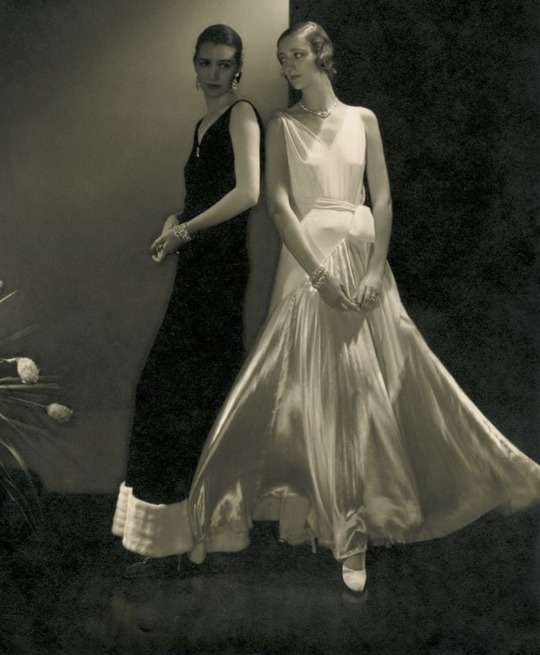

To many, Edward Steichen is the founding father of modern fashion photography. After a supposed dare by a close friend, Steichen undertook the task of promoting fashion as fine art via the medium of photography. To do this, he took a series of photographs of the gowns created by renowned French fashion designer Paul Poiret, which were subsequently published in the April 1911 issue of Art et Décoration magazine.
Widely considered the very first modern fashion photographs, they conveyed the aesthetics, movement and details of the clothes as central to their approach. His style centred heavily on the model, in typical portraiture style, but used lighting and carefully planned studio setups to focus on the clothes and give them a lavish and elegant look that was indicative of the time.
Another crucial factor in widening the appeal of modern fashion photography came in 1909, when the successful publisher Condé Nast purchased American lifestyle magazine Vogue. In doing so, he created the world’s premier fashion publication — one that gave photographers such as Steichen, Cecil Beaton and Horst P. Horst a platform to showcase their work to a huge new audience. In 1913 he followed that up with the launch of Vanity Fair, and together the two titles spent decades fighting Harper’s Bazaar to become the top fashion magazine in America.
What Steichen and Vogue gave to modern photography were the blueprints for almost all fashion advertising that was to come in the years after. Steichen formed his own unique visual vocabulary throughout the ’20s and ’30s, distilling classic renaissance imagery with cubism and futurism to create something that was fresh and exciting. His use of models, lighting and experimental studio techniques were completely revolutionary and, for many years, his contemporaries had no other choice but to follow his path. His importance cannot be exaggerated; Steichen changed the face of fashion photography, and his innovations are still being used to this day.
1934 – 1944: The revival of Harper’s Bazaar and The Design Laboratory
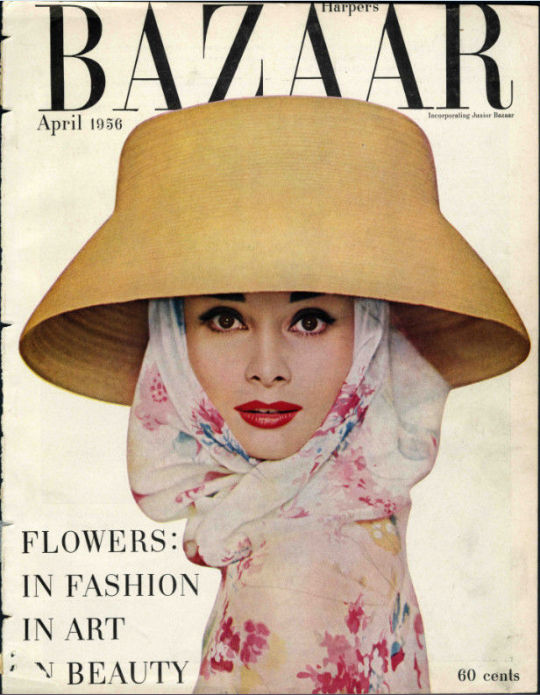
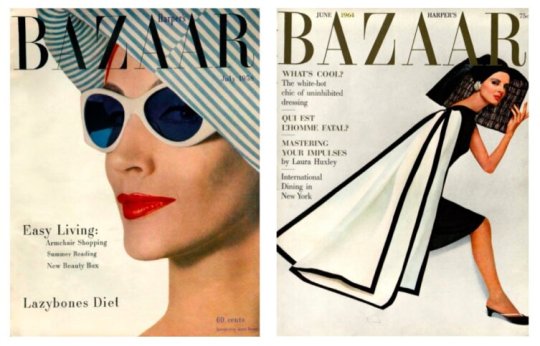
For many years, Harper’s Bazaar lacked the edge it needed to compete with the Condé Nast publications. The magazine’s fortunes changed in 1934, however, with the appointment of Russian photographer Alexey Brodovitch to the role of artistic director. With him in place, Harper’s Bazaar started down a new path that would change the landscape of fashion photography forever. He implemented radical layout concepts, used typography in bold new ways and had a vivid approach to imagery. It was his mix of elegance and innovation that transformed the fortunes of Harper’s Bazaar, securing its long-term future.
However, Brodovitch’s influence was more resonant than simply the pages of the magazine. In 1933 he started a course at the Pennsylvania Museum School of Industrial Art called the “Design Laboratory,” where he taught the full spectrum of modern graphic design principles. In attendance were young photographers such as Irving Penn, Eve Arnold and Richard Avedon. It would be these students that would go on to shape fashion photography on an almost continual basis for decades to come, all helping extend Brodovitch’s legacy long into the future.
1944 – 1960: Avedon and The Great Outdoors
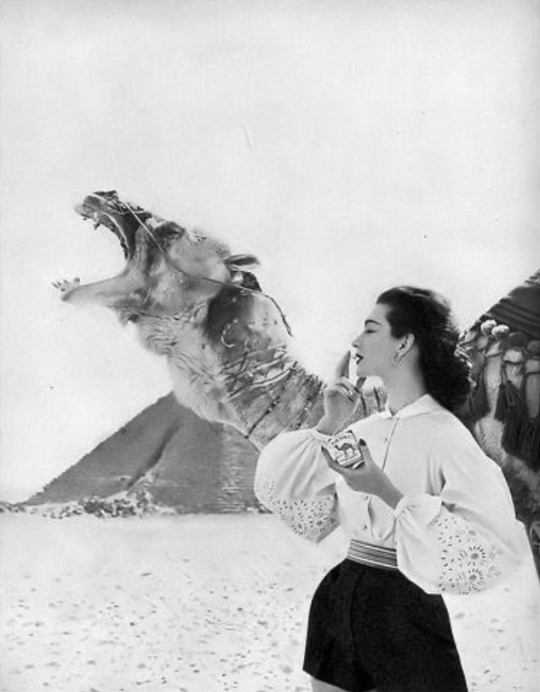
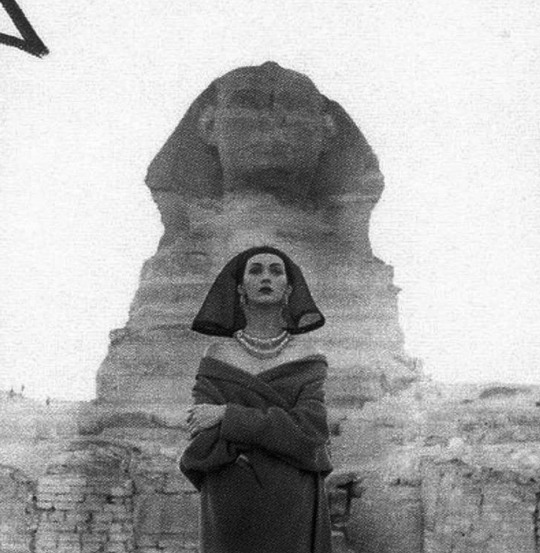
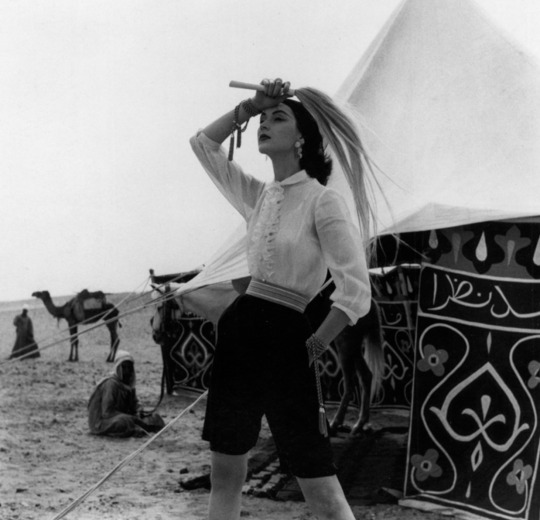
One of Brodovitch’s early students at the Design Laboratory was Richard Avedon, who started his career in 1944 as an advertising photographer. Avedon quickly found a fan in Brodovitch, who spotted his talent and sent him to Paris in 1946 to cover the latest collections from the premier fashion houses. Young and full of energy, the images Avedon captured for Harper’s Bazaar represented a new direction for fashion photography.
Avedon’s style was all about one thing: movement. He replaced the static, lifeless poses of the Steichen era with photographs full of verve and vitality. He shunned the studio, preferring to work outdoors or on location. Capturing lively street scenes and bustling parties, his models were photographed in the moment, showcasing their natural femininity; the flowing clothes seemed somehow to be an elegant extension of their own bodies.
1960 – 1970: The divide
Avedon’s move to shoot his models in the moment was a real turning point for fashion photography. Those such as David Bailey used this style extensively to capture the new and exciting times of swinging London in the ’60s. Bailey’s photography for British Vogue built on Avedon’s ideas, but gave them an even more youthful feel, while his carefree approach linked model, setting and lifestyle like never before. Prolific photographers of the present day, like Mario Testino, owe a lot to work like this.
But there were some, such as fellow Brodovitch student Irving Penn, who continued to stick to the traditions of the studio. His famous cover for the April 1950 edition of Vogue featured model Jean Patchett in contrasting black and white. With tone and angle set in opposition, the result is dramatic, yet tranquil and this image in particular sums up his approach to fashion photography. Although his style was starting to fall out of favour during the ’60s, Penn changed the face of fashion photography in subtle but far-reaching ways for many years to come.
1970 – 1980: Return to the studio and the rise of sexual controversy
Capturing movement outside the confines of the studio had been the modus operandi of many photographers throughout the ’50s and ’60s. But, by the start of the 70s, a resurgence in studio work was well underway. Taking cues from photographers such as Steichen, Beaton and Penn, this new movement was defined by its use of female nudity, overt sexuality and surrealism.
Once again, Richard Avedon was riding the crest of this new wave. Having signed a deal to move from Harper’s Bazaar to Vogue in 1966, he decided to return to the studio for much of his fashion photography work. Referencing the glamour and freedom of the previous two decades, his shoots for Versace throughout the ’70s and ’80s were inventive and exciting. His trademark use of movement was still present, as was his celebration of vitality and confident female sexuality.
Somewhat contrasting Avedon there was Guy Bourdin, a Parisian who relied on sexual imagery to tell a different story. While his critics say that Bourdin reduced the female body to its most erotic parts, often promoting violent and misogynistic views, his supporters argue that he created his own unique brand of surreal mysticism. His advertising work in the late ’70s (including shoots for luxury footwear brands Charles Jourdan and Roland Pierre) often portrayed woman as weak and controlled — a strict counterpoint to works by contemporaries like Helmut Newton and Avedon. However his imagery is undeniably captivating, and the use of bright colour, staged surrealism and sex has influenced the work of modern fashion photographers like Terry Richardson.
1980 – 2000: The age of rampant commercialism
The ’80s were the start of a brave new frontier for fashion photography. Commercialism, a force that had laid somewhat dormant for much of the previous 60 years, suddenly reared its head. Fashion was starting to have a broader appeal as Europe and America’s burgeoning middle class took more of an interest in what they wore. They had more money to spend, and savvy fashion labels like Calvin Klein, Levi’s and Ralph Lauren were only too happy to take it.
A standout campaign from 1981 featuring a 15-year-old Brooke Shields personified this perfectly. Shot by the omnipresent Richard Avedon, the ad for Calvin Klein jeans saw Shields proudly declare that nothing came between her and her Calvins. It was a line that came straight out of an ad man’s notepad, but it caught the public’s attention. Almost overnight it made Calvin Klein jeans a highly desired product.
One man completely at home in the studio, and finding a new demand for his work, was Irving Penn. Throughout the late ’80s he teamed up with Japanese designer Issey Miyake for a compelling and ground-breaking set of adverting campaigns. Taking influence from Steichen’s simplistic approach and blending in his own subtle surreal tones, Penn took Miyake’s futuristic designs and exaggerated them with large, embellished silhouettes, using the pattern of the fabric and the contortion of the human body to showcase Miyake’s creations in a whole new light.
Penn was extrapolating Steichen’s blueprints, pushing the relationship between product, model and photographer further than anyone had done before. He had stayed true to the studio, even when his peers were shunning it. He had used this time wisely and was advanced in his use of lighting and considerate in the sparseness of his shots. This approach has since inspired a whole new generation of fashion photographers to look beyond the normal and push the boundaries of what can be achieved, conceptually, in the studio.
The ’90s produced a slew of classic ads. From the strong female role models portrayed by Donna Karen, to the American dream represented by Ralph Lauren, the ’90s were seen by many as the golden age of the ad campaign. Alongside sex, labels used supermodels to focus their campaigns around, finding an obvious link between their natural beauty and aspirational products.
Once again, Calvin Klein was at the forefront of this new movement, and turned up the heat in a particularly famous campaign from 1992. Featuring Mark Wahlberg paired with a fresh-faced Kate Moss, the unassuming black-and-white shoot by Bruce Weber captured the essence of this new direction. The simple image of them both, topless, sporting clearly branded underwear was all that was needed to get the message across. And it worked. Calvin Klein saw a huge uplift in sales, turning them into a globally recognised brand.
2000s: Hypersexuality
As mankind has thoroughly established over the decades, sex sells. But, while people like Helmut Newton and Guy Bourdin had used imagery for its sex appeal extensively in the ’70s, the 2000s ushered in a new age of hyper sexuality that was designed as much to shock as it was to sell clothes.
One man not afraid of using flesh to push his products was Tom Ford. The iconic campaign for his first fragrance, For Men, was shot by Terry Richardson in 2007 and blended Ford’s penchant of sexual imagery with Richardson’s stark and instantly identifiable flashbulb aesthetic. Bourdin was clearly a huge influence on this work; the highly manipulated studio shots, use of colour and slightly sinister portrayal of female sexuality are all present. Strategic placement of the perfume bottle leaves little to the imagination, and the campaign caused a lot of controversy, as well as a lot of exposure, for Ford.
Another campaign from the Tom Ford stable was released in 2003 whilst the designer was working for Gucci. Stylised and simplistic, this ad, shot by Mario Testino, garnered a lot of attention as it featured a female model with the Gucci “G” shaved into her pubic hair. Less about the clothing and more about the preening, it was a bold move for Ford, but one that once again proved the old adage that there’s no such thing as bad publicity.
Although not averse to using sexual imagery in his advertising, Marc Jacobs strode a different path in the 2000s alongside longtime collaborator Juergen Teller. Teller’s distinctive photography style played a huge part in Jacobs’ promotional campaigns and differed hugely from the glamorous, highly stylised shoots of his contemporaries.
One standout example from 2003 featured Hollywood actress Winona Ryder. Having recently been arrested for shoplifting from the Saks department store in Beverly Hills, Ryder arrived in court wearing a Marc Jacobs dress. Spotting an opportunity, Jacobs hired her, and the now infamous ensuing photoshoot encapsulates his irreverent take on design with a devil may care attitude.
Celebrity endorsements and the celebration of wealth
Since Mark Wahlberg first posed for Calvin Klein back in 1992, big brands have been acutely aware of the attention a celebrity can bring to their campaigns. Strong females are a particular favourite, with fashion houses holding their rebellious and provocative spirit in high regard. Miley Cyrus for Marc Jacobs (much to the disapproval of Juergen Teller, who allegedly refused to work with the star), Lady Gaga for Versace and Lindsay Lohan for Miu Miu have all followed in the footsteps of Winona Ryder.
Current campaigns have also an increasing return to the nostalgia-tinged glamour of choreographed black-and-white shots. Hedi Slimane has repeatedly channelled ’70s era Helmut Newton for a large number of his campaigns for Saint Laurent, while Julia Roberts for Givenchy, Madonna for Versace and Mila Kunis for Miss Dior have all featured a similar monotone theme.
Perhaps the most dramatic shift in modern fashion photography, however, is the way in which campaigns are now being consumed. Between 2006 and 2013, the amount of pages dedicated per year to advertising in Vogue fell by 16%. In an age of Instagram and blogs, it’s clear fashion marketers have adopted a new strategy — one that includes a tacit acceptance that images may not ever make it anywhere near a glossy A4 magazine page, and may only ever be consumed on a scrolling social media feed. Content today is created in order to be shared, liked and retweeted. For many brands, lookbooks are the new ad campaigns — cheaper to produce, easier to consume and better suited for distribution across digital mediums.
Once the gatekeepers of the industry, today fashion magazines have been usurped by the internet. For some, this move is democratising, removing the elitism that the fashion industry old guard have long been accused of fostering. But, to many, it is the gentle dumbing down of a once proud art form that, thanks to the work of people like Steichen, Avedon, Newton and Penn, has long held great cultural and historical significance.
TYPES OF FASHION PHOTOGRAPHY
1. Catalog Photography
Catalog photography is perhaps the simplest of the 4 fashion photography styles. Its purpose is to sell clothing, and the focus is on the outfit. It is often a good place to start in the field of fashion photography before progressing to some of the other styles.
Catalog photography really is a type of product photography. The only real difference between catalog photography and product photography is the presence of the model. Even so, the focus remains on the clothes.
The background of the photos are usually plain–white and grey colors are the most common. There are minimal accessories and few props. The models typically stand up straight to show the outfit, although they may strike different poses to show off features of the outfit like pockets.
Usually, the biggest problem the photographer faces with this style of fashion photography is the lighting. You want to use lighting that captures the details of the clothing without washing out the colors. To do this, it’s best to avoid using indoor lights or shooting at night.
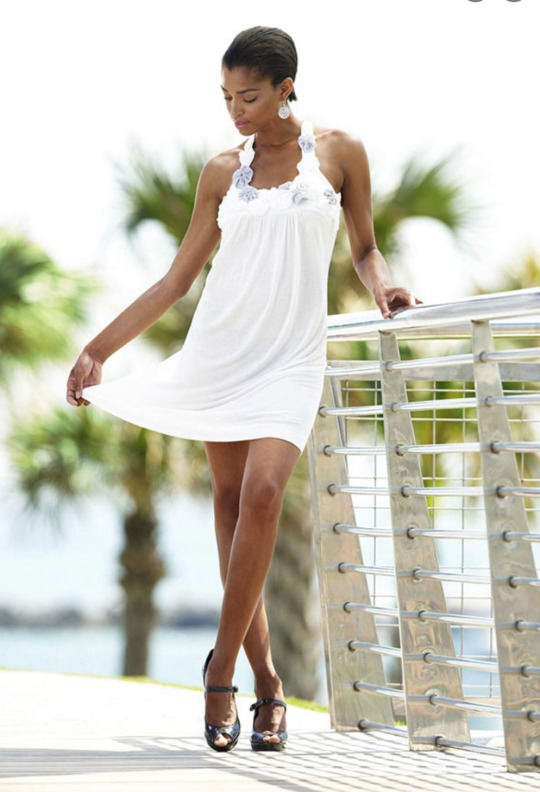
2.High Fashion Photography
High fashion is something people see frequently on the cover of their favorite magazines. But, from the photographer’s perspective, high fashion means well-known supermodels in often exaggerated poses, a sometimes unrealistic wardrobe, and all elements including hairstyles and location blended to create a flawless image.
But, getting that flawless image is quite the challenge. You’re constantly confronted with difficult decisions regarding location, lighting, models, wardrobe, hair, and much more. Even if much of that is decided for you, you still have to put it together so that it looks glamorous and appealing.
One of the first things you should do is carefully consider the mood you want to create with the shoot. You don’t have to be too specific and you don’t have to stick with it if inspiration leads you elsewhere, but it’s a good place to start.
You also need the right model for your shoot. You want someone experienced, but also someone who will collaborate with you to create that mood you want. As well as the model, you’ll want a good team.
You’ll want people who are responsible as well as talented. You’ll want professionals in makeup, wardrobe, and hair styling. It also helps if they share your vision for the shoot and the art of photography in general.
If you have a choice of location, you’ll want to again consider the mood you’re trying to create. There are also practical considerations, such as whether you need a permit for your location, and if it’s indoors, you might need permission.
And, then there’s the equipment. You’re going to need lighting equipment as well as a good camera. You’ll want a small weight camera with a good battery life and features that help with low light conditions. You will also want a selection of lenses for varied types of images.
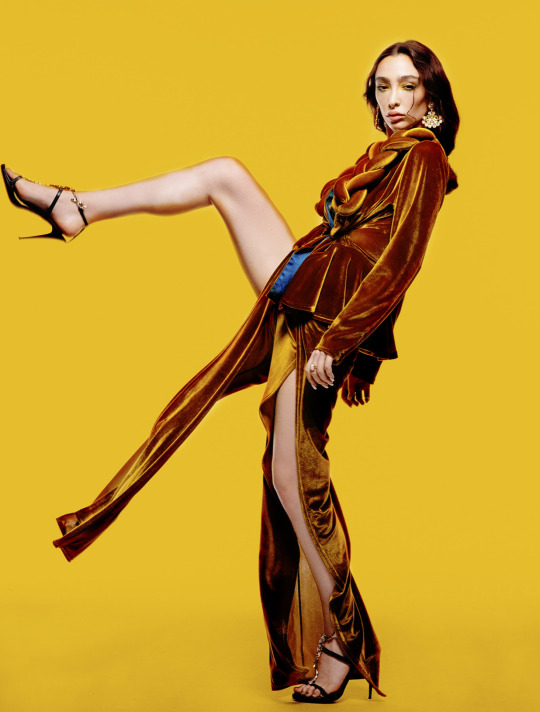
3.Street Fashion Photography
Street fashion, also known as urban fashion, is often thought of as the opposite of high fashion. An offshoot of street fashion is alternative fashion–grunge and hip-hop are examples that later became mainstream street fashion styles.
Street fashion looks are more rugged than high fashion. It consists of the kinds of things people wear everyday like jeans, shirts, and hoodies. It also includes dresses that look elegant, but don’t sacrifice comfort.
Photographers who specialize in this style are often shooting regular people on the street rather than models. But, you’ve got to be careful about getting permission to photograph people on the street. The rules aren’t always clear, as several street fashion photographers can tell you.
Most of the time with street fashion, it isn’t just about what the person is wearing; it’s also about their expression, how confident they look, the light, and how what they’re wearing accents their attitude.
To capture street fashion shots, most photographers use a longer lens. That way, they can get photos from a distance without making people feel self-conscious about the shoot.
4 Editorial Fashion Photography
This is fashion photography that tells a story. You’ll find editorial fashion photography in publications like magazines and newspapers. The images usually accompany text, which can be about a wide variety of subjects.
Editorial fashion photographs can also tell the story themselves or they may suggest an intriguing backstory. Often you’ll find editorial fashion images that are part of a theme or concept, or they may relate to a particular designer or model.
The goal here is to create a specific mood that tells the story. These images might involve one brand or several brands and various styles of photographs, from closeups to long distance shots.
That means there are likely to be various types of shots requiring different equipment as well as different makeup, wardrobe, and hairstyles on your models. There are also likely to be a number of different props.
Despite the challenges, editorial photography can be one of the more rewarding fashion photography styles because of the creativity it allows.
If you’re considering fashion photography as a genre, these 4 styles can give you an idea of the different possibilities in the field. Of course, you’ll need to get the proper equipment as you would with any genre, but once you have that, there are a number of styles from which you can choose. Really, it’s about deciding which style fits your particular needs and desires.
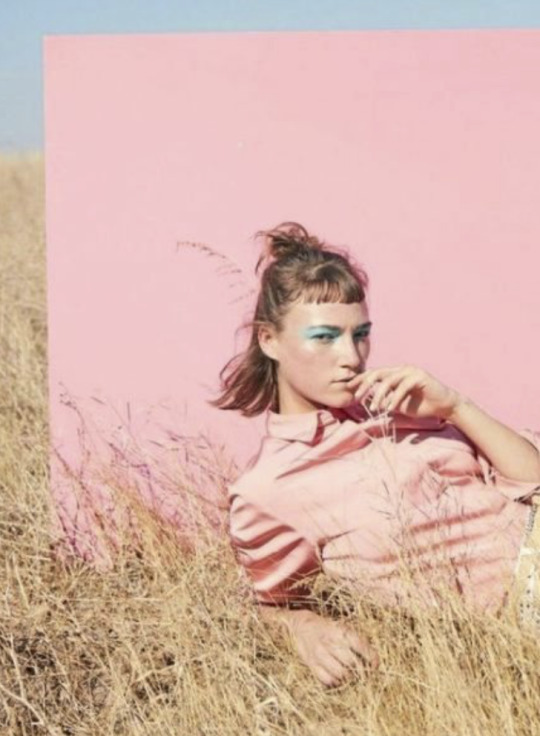
0 notes
Text
Diego Ricol Freyre recomienda: Diego Ricol recomienda: 100 frases para la posteridad dichas por fotógrafos (y II)
Terminamos el especial sobre frases inspiradoras de grandes fotógrafos que empezamos ayer con las primeras cincuenta sentencias. En esta ocasión vamos a ir con las restantes entre las que vais a encontrar citas igualmente interesantes de fotógrafos de todos los tiempos.
Sobre técnica fotográfica (continuación)
51. “Cuanto más específico seas, más general será”, Diane Arbus.
52. “Si tus fotografías no son lo suficientemente buenas, es que no estás lo suficientemente cerca”, Robert Capa.
53. “Al hacer una toma estás siendo selectivo, luego editas las imágenes que deseas publicar y vuelves a ser selectivo. Desarrollas un punto de vista que quieres. Intentas entrar en una situación con la mente abierta, pero luego formas una opinión y la expresas en tus fotografías”, Mary Ellen Mark.
54. “Limita tus herramientas, concéntrate en una cosa y haz que funcione… Te vuelves muy inventivo con las restricciones que te impones”. Anton Corbijn.
55. “Muchos fotógrafos piensan que si compran una cámara mejor podrán tomar mejores fotografías. Una cámara mejor no hará nada por ti si no tienes nada en la cabeza o en el corazón”, Arnold Newman.
56. “Eres responsable de cada parte de tu imagen, incluso las que no te interesan”, Jay Maisel.
57. “La pieza más importante del equipo después de la cámara es un buen par de zapatos. Un escritor puede trabajar desde la habitación de un hotel, pero un fotógrafo tiene que estar allí, por lo que tiene que caminar mucho”, David Hurn.
58. “Durante el trabajo, debes estar seguro de que no has dejado ningún agujero, de que has capturado todo, porque después será demasiado tarde”, Henry Cartier-Bresson.
59. “Por mucho que juegues con los colores o los papeles de impresión nada transformará una fotografía común en otra cosa que no sea una fotografía común”, Bill Brandt.
60. “Estoy muy preocupado por perfeccionar mi técnica algún día. Tengo que decir que es desafortunado ver cuántas de mis imágenes dependen de algún error técnico”, Sally Mann.
61. “Aquellos que quieren ser fotógrafos serios realmente van a tener que editar su trabajo. Tendrás que entender lo que estás haciendo. Y vas a tener que hacer algo más que disparar, disparar y disparar. Pararte a mirar tu trabajo es lo más importante que puedes hacer”, Annie Leibovitz.
62. “Si quieres ser mejor fotógrafo, ponte delante de cosas más interesantes”, Jim Richardson.
63. “Nunca dejes de mirar, no importa dónde estés, en todas partes hay buenas fotografías”, Art Wolfe.
64. “Te vuelves técnicamente hábil, quieras o no, cuantas más fotos tomas”, William Eggleston.
65. “Mira muchas exhibiciones y libros, y no te obsesiones con las cámaras y las cosas técnicas. La fotografía es sobre imágenes”, Fay Godwin.
66. “Cuantas más fotos veas, mejor serás como fotógrafo”, Robert Mapplethorpe.
67. “Uno de los errores más grandes que cometen los fotógrafos es no tener un trabajo que defina sus intereses y fortalezas. Nadie te va a contratar por lo que dices que te gusta hacer. Tienes que demostrarles que eres capaz de hacerlo primero”, Ami Vitale.
68. “Sé tú mismo. Prefiero ver algo, aunque sea torpe, que no se parezca al trabajo de otra persona”, William Klein.
69. “El azar siempre está ahí. Todos lo usamos. La diferencia es que un mal fotógrafo se encuentra con ello una vez cada cien, y un buen fotógrafo encuentra oportunidades todo el tiempo”, Brassaï.
70. “Un fotógrafo es un acróbata pisando el hilo del azar, intentando capturar estrellas fugaces”, Guy Le Querrec.
71. “Hay un momento breve en el que todo lo que hay en la mente y el alma del hombre se refleja en el espíritu a través de sus ojos, sus manos y su actitud. Ese es el momento de disparar”, Yousuf Karsh.
72. “Solo obtienes un amanecer y un atardecer al día, y solo pasas un determinado número de días en la Tierra. Un buen fotógrafo hace sus cálculos y no desperdicia el tiempo”, Galen Rowell.
Sobre cómo retratar a las personas
73. “Una cosa es hacerse una idea de cómo es una persona; otra cosa es hacer un retrato de quién es”, Paul Caponigro.
74. “Un primer plano fotográfico es quizás la forma más pura de retrato, creando un enfrentamiento entre el espectador y el sujeto que la interacción diaria hace imposible, o al menos descortés”, Martin Schoeller.
75. “Para mí, la cara (los ojos, la expresión de la boca) es lo que refleja el carácter. Es la única parte del cuerpo que nos permite ver a la persona por dentro”, Philippe Halsman.
76. “Todos tenemos una especie de máscara de expresión. Dices adiós, sonríes, tienes miedo. Intento quitar todas estas máscaras y poco a poco restar hasta que quede algo puro. Una especie de abandono, una especie de ausencia”, Paolo Roversi.
77. “Nunca pienso en un disparo antes de hacerlo. Porque no hay una fórmula para las personas. Lo que trato de hacer es quitar todo en lugar de ir con nociones preconcebidas. Si hago eso, podría extrañar una gema o una joya que la persona me ofrece”, Platon.
78. “Las personas son conscientes del poder de una cámara, y esto instintivamente hace que la mayoría se sientan incómodas y rígidas. Pero me enseñaron a permanecer en un lugar lo suficiente, sin fotografiar, para que la gente se sintiera cómoda conmigo y con la presencia de la cámara”, Lynsey Addario.
79. “Un buen retrato es la relación que se establece entre dos personas, tiene que haber alguien delante de la cámara y alguien detrás”, Jeanloup Sieff.
80. “No importa si estás fotografiando a un portero en un mercado en Marrakech o al rey de Marruecos. Tienes que tener el mismo enfoque compasivo para todos. En general, tienes que ser amable con todos”, Albert Watson.
81. “Con la mayoría de las personas a las que he tomado fotografías he tenido una conversación. ‘¿Cuáles son tus metas y aspiraciones?’ ‘¿De qué se trata?’ No se trata solo de que yo capture la imagen, sino que quiero saber de qué se trata”, Jamel Shabazz.
82. “Un retrato no está hecho en la cámara sino a cada lado de ella”, Edward Steichen.
83. “El fotógrafo, incluso en la moda y el retrato, tiene que tener un punto de vista. Es importante saber lo que representa ¿no? La mayoría de la gente solo toma fotos que no representan nada. Siguen las tendencias y no saben porqué”, Peter Lindbergh.
84. “No necesito saber nada sobre las personas que fotografío, pero es importante que reconozca algo de mí mismo en ellas”, Rineke Dijkstra.
Sobre cómo encontrar tu pasión
85. “Si pasa un día sin que haga algo relacionado con la fotografía, es como si hubiera descuidado algo esencial para mi existencia”, Richard Avedon.
86. “¿Cuál de mis fotografías es mi favorita? La que voy a hacer mañana”, Imogen Cunningham.
87. “No hay una línea divisoria entre aventura y fotografía”, Chris Noble.
88. “Hay un momento en que la gente dice que tu trabajo es revolucionario, pero tienes que seguir siendo revolucionario. No puedo seguir retratando a estrellas del pop toda mi vida. Tienes que seguir cambiando, seguir presionándote, buscando lo nuevo, lo inusual”, Rankin.
89. “Uno realmente debería usar la cámara como si mañana fuera a ser ciego”, Dorothy Lange.
90. “La fotografía es algo que aprendes a amar muy rápido. Sé que muchas, muchas cosas me van a pedir que me tomen fotos y las tomaré todas”, Jacques-Henri Lartigue.
91. “Creo que si alguna vez me siento satisfecho, tendré que parar. Es la frustración lo que te impulsa”, Eve Arnold.
Las mejores citas cortas
92. “Fotografía solo lo que amas”, Tim Walker.
93. “No escribí las reglas. ¿Por qué debería seguirlas?”, W. Eugene Smith.
94. “Si pudiera contar la historia en palabras, no tendría que cargar con una cámara”, Lewis Hine.
95. “Los primeros diez mil disparos son los peores”, Helmut Newton.
96. “Fotografía: Tantos intentos, tan pocas obras maestras”, James Elliott.
97. “Por cada negativo que acaba en desilusión, hay uno que es una alegría”, Edward S Curtis.
98. “Fotografía es 1% de inspiración y 99% de muebles en movimiento”, Gregory Heisler.
99. “Es más importante hacer clic con la gente que hacer clic en el obturador”, Alfred Eisenstaedt.
100. “La gran fotografía es sobre la profundidad de los sentimientos, no sobre la profundidad de campo”, Peter Adams.
Con esto hemos terminado con las frases célebres de fotógrafos. ¿Qué os han parecido? ¿Echáis en falta alguna que queráis añadir?
En Xataka Foto | 100 frases para la posteridad dichas por fotógrafos (I)
Vía | Digital Camera World
Foto de portada | Autorretrato de Vivian Maier extraída del álbum Photography-Masters de Retrogasm
Ver fuente
Ver Fuente
0 notes
Text
Four reasons for immediate optimism in Anthony Richardson! 2024 Mock draft has #Colts 3rd! NFL's little job fair destroys sports media competition!
youtube
View On WordPress
#2024 Mock Draft#Anthony Richardson Colts#Colts draft#Darius Rush#NFL Draft viewership#Steichen Richardson#Youtube
0 notes
Text
Shane Steichen wraps first minicamp; talks state of Anthony Richardson and team!
youtube
View On WordPress
0 notes
Text
Anthony Richardson’s brain, not arms and legs, top trait in Colts Top 10! Nuggets to win tonight!
youtube
View On WordPress
0 notes
Text
Anthony Richardson getting half the reps for Colts - making Shane Steichen smile all the way at OTAs!
youtube
View On WordPress
0 notes
Text
Two Big Brains - #Colts, #Pacers Draft options, #iubb Trayce Jackson-Davis draft prospects, and much more!
youtube
View On WordPress
0 notes
Text
Anthony Richardson & Shane Steichen bring stability to #Colts! #Pacers last lottery shot! Is Matt Ryan top 50 all-time QB?
youtube
View On WordPress
#Anthony Richardson#Carson Wentz#IHSAA basketball rule change#Matt Ryan rank#Shane Steichen#Victor Wembanyama#Youtube
0 notes
Text
Anthony Richardson similar to familiar QB! Big Q excited! #Colts need soft sell! #Cubs smart morons!
youtube
View On WordPress
0 notes
Text
Anthony Richardson, does he start for #Colts week one? Quenton Nelson - fascinating truth teller! Nick Foles still a Colt for a good reason!
youtube
View On WordPress
0 notes
Text
Will Levis odds on favorite to be #Colts pick! Experts not sure! Shane Steichen “VERY detail oriented!” says Jelani Woods!
youtube
View On WordPress
#Anthony Richardson Colts#CJ Stroud Colts#Gelani Woods#Shane Steichen detail#Tony Sparano Colts#Will Levis Colts#Youtube
0 notes